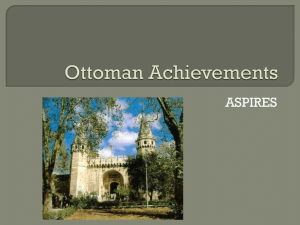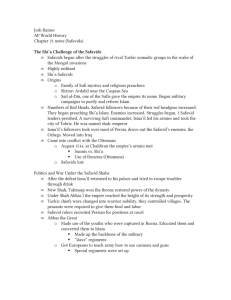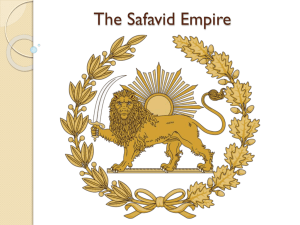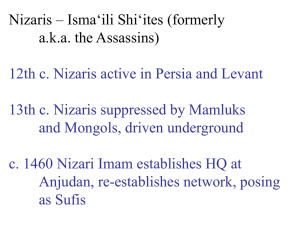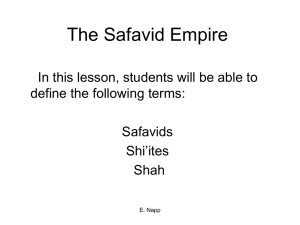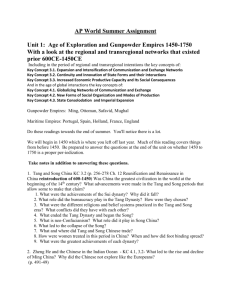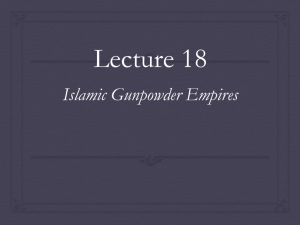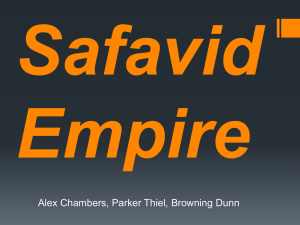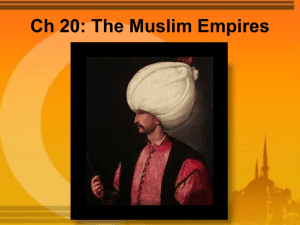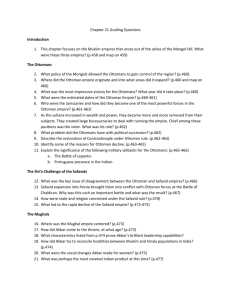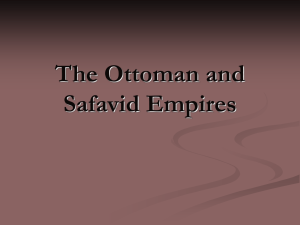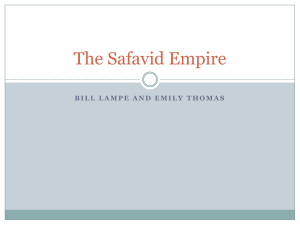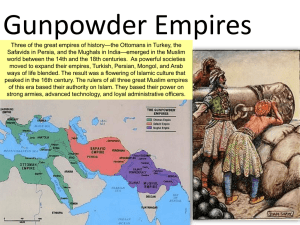The Safavid Empire
advertisement
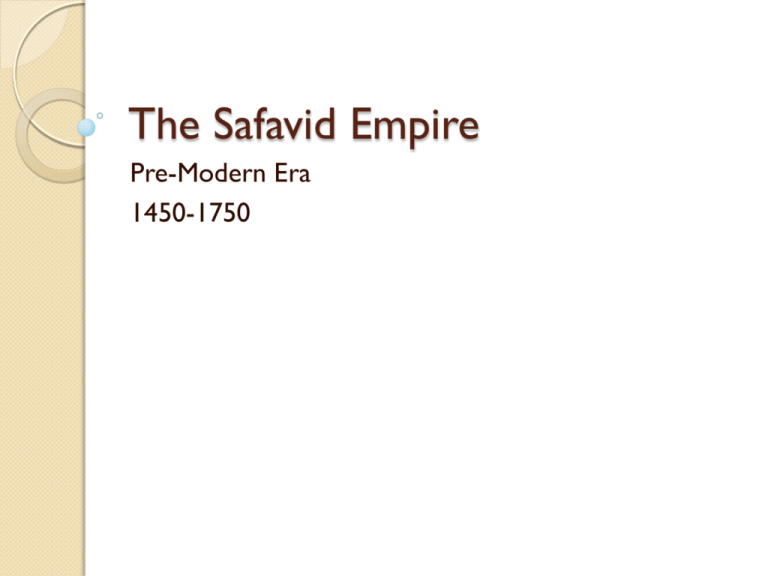
The Safavid Empire Pre-Modern Era 1450-1750 The Shi’a Challenge of the Safavids Main Idea: ◦ In the first years of the 16th century, the Safavids founded a dynasty that conquered what is now IRAN. Restoring Persia as a major center of political power and cultural creativity, they also established one of the strongest and most enduring centers of Shi’ism within the Islamic world. Comparing the Gunpowder Empires Ottomans ◦ Turkic nomadic group ◦ Highly militant group ◦ Sunnis Safavids ◦ Turkic nomadic group ◦ Highly militant group ◦ Shi’a Therefore: These two groups would be in conflict with one another despite both groups Islamic ideologies. Background on Safavids Founded by Sufi mystics and religious preachers near the Caspian Sea (Think Tehran, Iran) After centuries of warfare, Ismail (a surviving Sufi commander) captured the city of Tabriz and was proclaimed the shah, or emperor. In the next 10 years, Ismail’s followers conquered much of Persia and drove out the Safavid’s enemies. The Battle of Chaldiran Safavid expansion into NW Persia created conflict with Ottomans. One of the most fateful battles in Islamic History- Chaldiran ◦ More than dynastic clash – ideological ◦ Battle demonstrated importance of gunpowder: Cavalry (Safavids) versus cannon (Ottomans) Devastating defeat for Safavids Ottomans could not follow up w/ crushing blow to Safavids, but dreams of territorial expansion were finished. Life under the Shahs Like the Ottomans, the Persian Safavids created a bureaucracy to supply the government. Practice of recruiting slave armies from Russia: ◦ Much like Janissaries, some of these boys rose to positions of power and prestige w/in the government. State and Religion Padishah(s) – King of Kings ◦ Opulent palace life ◦ Claimed to be descendants of Shi’a imams (or successors of Ali) Religious scholars – Mullahs ◦ Teachers, but sponsored by state ◦ Paid by state – had to mention the Safavid ruler every Friday. Pressure others to convert – but showed tolerance (not to Sunnis) Artistic Splendor Isfahan- city and seat of power for Safavids built by Shah Abbas. ◦ Half million people in its 25 mile circumference. ◦ Colleges, markets, government buildings, gardens, public baths, rest houses. ◦ Great Mosques – demonstrate glory of Empire ◦ Originally there existed a Jewish quarter, but later in Shah Abbas’s rule Jews were forced to convert to Islam or leave city. Women in Safavid Empire Originally it is believed that women were: ◦ Subordinate to men ◦ Lost legal and hereditary rights ◦ Even women of nomadic background lost their independence when they settled in towns or conquered areas. ◦ Especially women/wives of the elite were subject to strict laws and codes: Seclusion in the household Veiling when out in public Women in Safavid Empire: Recent evidence suggests otherwise: ◦ There was a struggle against these restrictions ◦ Some women openly refused to wear face covers while in public ◦ Women donned bright clothing in defiance ◦ @ court women played an important political role (indirectly) and were often deeply involved in political conspiracies ◦ Women were active in trade & moneylending ◦ Women could often provoke provisions in Islamic law to protect their rights and even divorce if conditions in marriage had become intolerable. Rapid fall of Safavid Empire Abas became paranoid of his sons ◦ Killed all of his kids and successors ◦ His weak grandson was chosen (cause he could be controlled) Princes ◦ Locked away from public and became poor in their leadership ability ◦ Poor government couldn’t fight outside invaders. Ottomans, Mughals, Afghani tribes besieged Ishfahan – fell Oct 1722 (80,000 inhabitant killed of starvation & disease) Area became a battleground for generations to come…
